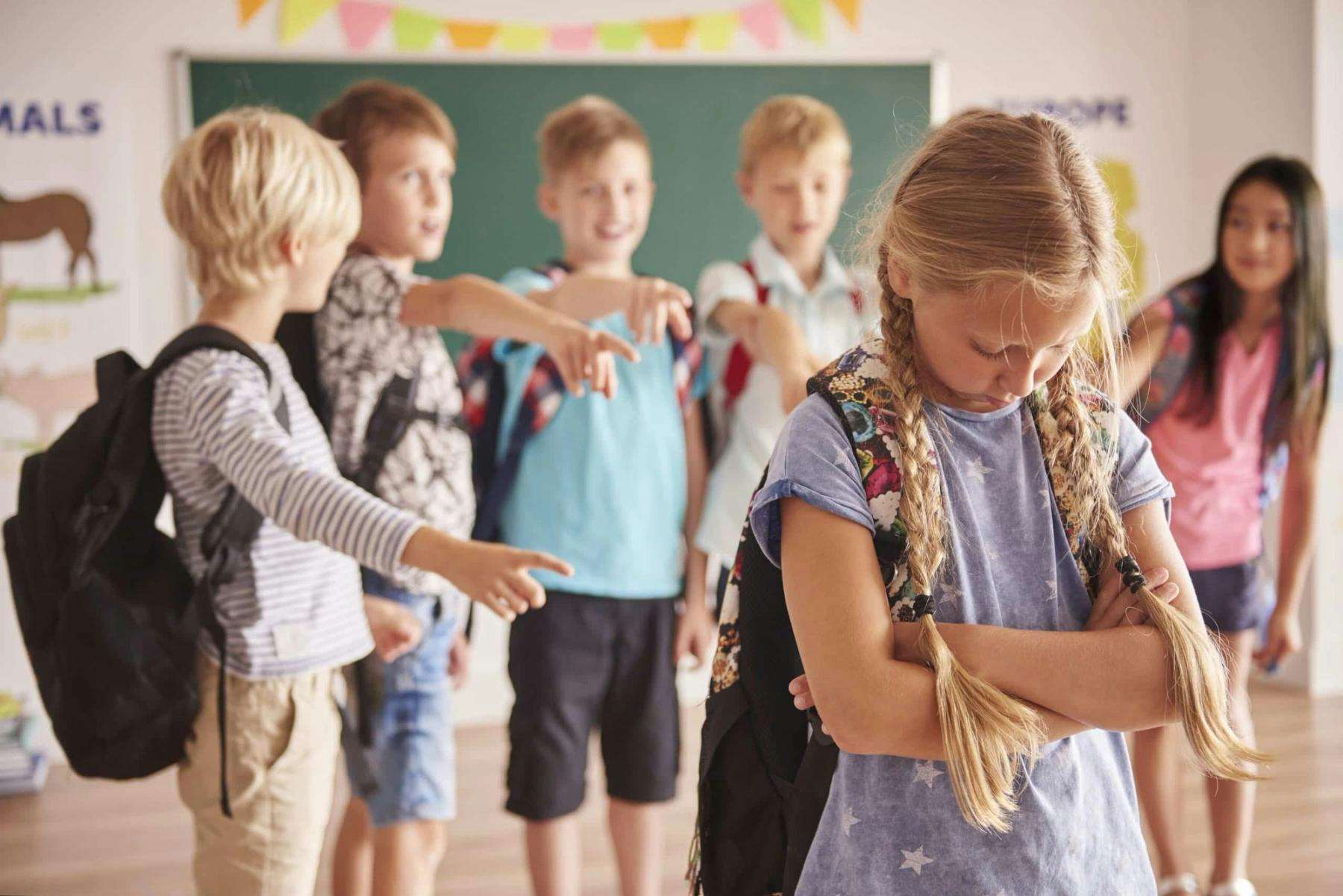January 13th, 2021

Written By: Maryjane Reilly, LPC
Bullying may be one of the first traumatic experiences a child faces. Unwanted, aggressive behavior displaying power imbalances can leave a child feeling rejected, leading to much bigger problems down the road for both the bully and the victim. Beyond the immediate discomfort of experiencing bullying, victims are at high risk of physical and emotional disorders. Bullying comes in various types, such as physical abuse, verbal abuse, social abuse, and cyberbullying. These all present themselves in different ways but will lead to similar unhealthy symptoms and lasting effects.

• Social isolation
• Declining school performance
• Depression
• Anxiety
• Changes in eating habits
• Low self-esteem
• School avoidance
• Bedwetting
• Higher risk of illness
• Psychosomatic illness
Victims are not the only ones who suffer. Without proper correction, bullying behavior is likely to continue into adulthood.
• Familial abuse
• Risk of antisocial behavior
• Substance abuse
• Less likely to be educated or employed
Bullying affects 20% of high school students and 25% of all middle school students, according to the Centers for Disease Control and Prevention (CDC). However, these problems can start as young as 5 years old. Minority students, those who identify as LGBTQ+, and students with disabilities are especially more susceptible to being bullied than their peers.
The CDC provides information about possible behavior changes to watch for in children and ways to support them.

Begin the conversation about bullying with children as young as kindergarten. Parents, teachers, and caregivers need to be a child’s biggest supporters. Your child is listening to and remembering your advice. Spending 15 minutes a day talking with your child, no matter their age can help provide reassurance that if, or when your child experiences hardship of any kind, their caregivers will be there for them.
Kids are often reluctant to tell adults about bullying because they are experiencing shame and are unsure how their caretaker will react. If your child tells you about being bullied, listen calmly, offering comfort and support. Validate your child’s experience and feelings and reassure them that you can and will support them by emotionally being present, listening, validating, or by taking action.
• Praise your child for doing the right thing by coming to you
• Remind them that they're not alone and that their experience is valid
• Explain that it's not your child’s fault and that the bully is the one who is behaving poorly
• Reassure your child that you will figure out what to do about it together
• Look at resources and make a plan about how to respond to the situation
• Don’t encourage “tit for tat” behavior. Develop a plan that elevates the victim and ensures their well-being without it being at the expense of the bully or others.
Bullying your bully will only result in a cyclical pattern of abuse that leaves both parties hurt.
There are many options of age- appropriate approaches to these difficult conversations.

For young children (K-3rd grade), reading books to them that have themes of acceptance, diversity, and anti-bullying both before and during any instances of bullying can create great conversation starters.
These books can help little ones to process their understandings of friendship and social interaction as well as create space for conversations around “What to do when this happens to me or a friend.”
A few books of this nature include, “The Good Egg” and “The Bad Seed” by Jory John, “I Am Human” by Susan Verde, as well as “The Sneetches” by Dr. Suess, and more.
For older children, open communication remains at the root for success and creating consistent connection points through conversation. Also, reading books such as “Wonder” by R.J. Palacio, or watching movies such as Inside Out from Pixar will also help.
These stories, along with countless others, offer opportunities to open the conversation around emotions, anxieties, and experiences shared by both the characters and the family members to help reassure children that they are safe and educate them on what to do if these types of struggles happen to them.
When a child is being bullied, depending on the severity of the situation, the caretaker may need to step in to alleviate the bullying. If you have determined your child is involved in bullying, learn how you and other adults can work together to support your child, whether they were bullied, bullied others, or witnessed bullying.
Take bullying situations seriously, as they rarely dissipate on their own. Definitely take action if the bully threatens to elevate the behavior or physical harm is involved. In most cases, teachers/program leaders should be contacted first. If you've tried those methods and still want to speak to the bullying child's parents, it's best to do so where an official, such as a counselor or teacher can be there to mediate.
Avoid common mistakes, such as thinking kids can work it out without adult help, forcing the children involved to talk about the situation publicly, or forcing apologies on the spot. Also, it is recommended to avoid talking to children together at the beginning of an incident as this will only put pressure on both sides and rarely leads to honest conversations. Instead, talk to each child separately, with a member of authority that the child feels safe with the present. You will have a better chance of getting honest answers from the child this way.

Occasionally, the situation may be severe enough to involve authority. Research your state’s anti-bullying law to determine if ongoing, unresolved situations are worth authoritative action. There are federal laws that require schools to address harassment based on race, color, national origin, sex, and disabilities.
Counseling can help bully perpetrators and victims enhance psychological well-being and encourage trauma recovery. For victims, counseling can help break the victimization cycle of learned helplessness and enhance self-esteem. It also teaches healthy coping mechanisms.
Effective therapy can help a victim of bullying manage complex emotions such as guilt, anxiety, sadness, and shame. No matter the age of a child, they may need guidance to understand the importance of setting boundaries and developing assertive, pro-active communication.
Counseling helps many victims connect with therapeutic modalities for self-relaxation, including mindfulness, meditation, and expressive arts as therapy. Enrolling a bullying victim in therapy often gives them a safe outlet to express their anxiety and frustration with a trusted third-party adult.

Counseling interventions can also help a child who is the perpetrator of bullying. Therapy services can help a child develop empathy as they engage a sense of consequence. Methods in counseling help probe for traumatic events or environmental influences that cultivate anti-social or hostile behaviors toward others. Therapy sessions reinforce interpersonal skill development, delayed gratification, self-esteem, and emotional self-control to instill coping mechanisms that promote anger management.
GLSEN, a national network of students, families, and educators advocating for the rights of LGBTQ+ students, is hosting No Name-Calling Week from January 18th - 22nd this year. It is organized by educators and students to end bullying in schools. This awareness week will focus on providing tools for disrupting harassment and bias-based bullying while inviting LGBTQ+ students to assert what they choose to be called.
Through initiatives are promising steps toward ending children’s harassment, bullying is still one of the biggest hardships many youths endure. Ensuring your child’s wellness as they tackle bullying with support from a mental health professional is often the best and most promising approach.
At Clarity Clinic, we have highly trained staff who specialize in psychotherapy and psychiatry services. To learn more about how we can support your mental health, call Clarity Clinic on (312) 815-9660 or schedule an appointment today.
Our Services
Virtual/Online CarePHP and IOPAdult PsychiatryChild & Adolescent PsychiatryAdult TherapyChild & Adolescent TherapyCouples CounselingFamily TherapyGroup TherapyPsychological TestingTranscranial Magnetic Stimulation (TMS)